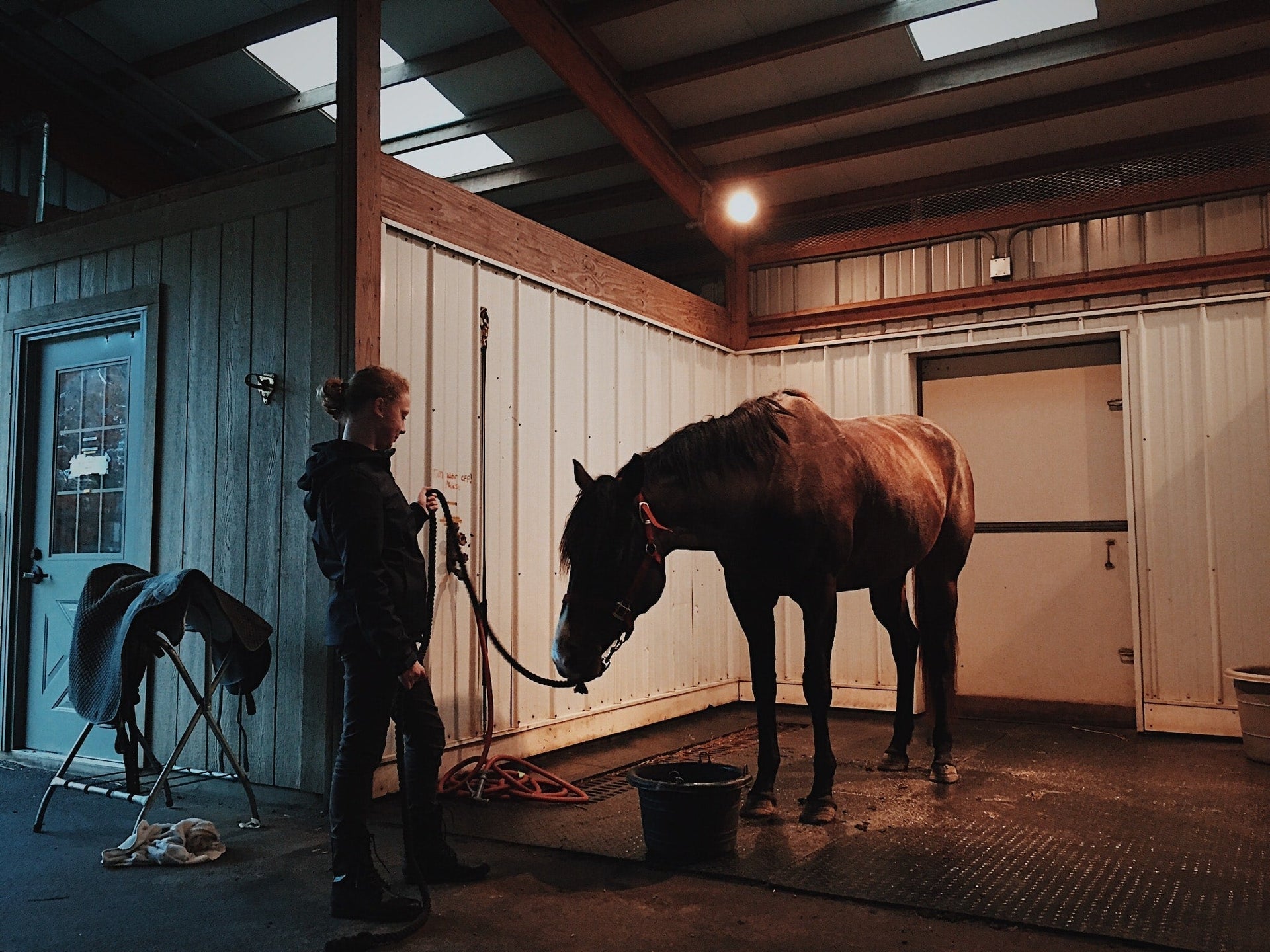Banamine vs. Bute in Horses: What’s the Difference?
October 21, 2025

Published: October 2020 | Updated: July 2022
Two anti-inflammatory prescription medications many horse owners keep on hand are phenylbutazone (bute) and flunixin meglumine (banamine). But when should these medications be used and also, how do the two compare?
Bute and banamine are the most commonly used equine non-steroidal anti-inflammatory drugs (NSAIDs) for reducing inflammation and pain, and both can be used for several different situations.
Each can be given intravenously by a veterinarian, and they also come in oral forms which are easier for horse owners to administer at home.
Treating Equine Inflammation
Inflammation is a natural reactive process that occurs in response to an injury and the first step to healing. The inflammatory process involves complex reactions between damaged cells at the site of injury, blood vessels, immune cells, and biochemical signals sent and received in the body.
Inflammation is a completely natural process and shouldn’t be altogether prevented, but it can be problematic when it becomes excessive and creates a vicious cycle that causes more tissue damage and pain than the original injury.
This is where NSAIDs such as bute and banamine for horses can be helpful, as they work through the COX-1 pathway to block an enzyme called cyclooxygenase (COX). Blocking COX interferes with the production of prostaglandins, chemicals responsible for promoting inflammation in the body, while still allowing healing to take place.
Bute for Horses
Bute comes as a paste, pill, or powder and is typically given to horses who are experiencing musculoskeletal pain such as lameness. The drug takes several hours to become effective but tends to work well for many horses. However, bute does come with several precautions which should never be ignored:
- Unsafe to give at high doses for long periods of time;
- Can cause ulcers in the large colon, especially if used frequently or for long periods of time;
- Unsafe for young horses who have not fully developed the ability to process the drug as well as for horses with underlying kidney or liver disease;
- May mask signs of mild to moderate lameness, which in turn may lead to overexertion and worsen the injury.
It is important to always read the label on the medication, but a generally recommended bute dosage for horses is 1-2 grams (or 1-2 scoops if using a powder) for every 500 lb of horse body weight, not to exceed 4 grams per day.
Again, speaking with your veterinarian before giving your horse phenylbutazone or another drug is the safest way to manage your four-legged friend.
Banamine for Horses
Banamine is commonly used for smooth muscle pain such as colic or for ocular discomfort from something like corneal ulcers, and the drug’s main purpose is for pain control.
While some people believe that banamine treats colic, this isn’t exactly true, and in fact, the drug may mask colic pain, leading owners to mistakenly believe the colic episode is resolved. Always contact your veterinarian if your horse experiences colic.
Flunixin meglumine comes as a paste or injectable, but it should never be given intramuscularly, as it can cause severe or even fatal side effects if given outside of a blood vessel. It’s best to leave this type of injection to your veterinarian. Like bute, banamine should never be given for long periods of time as it can cause gastrointestinal and/or kidney damage.
The general paste banamine dosage for horses is 0.5mg per lb of body weight. If your horse is in need of injectable banamine, be sure to call your veterinarian for administration to avoid complications.
Again, FullBucket is not your veterinarian and we recommend talking to an equine professional before administering any form of medication to ensure appropriate dosage.
Protect Your Horse’s Gut Health While Using NSAIDs
Though bute and banamine in horses certainly have their place for treating certain acute conditions, neither should be relied upon for continuous pain management. If your horse suffers from arthritis or another chronic issue, ask your veterinarian about a more suitable long-term pain relief solution.
The reason for this is that prostaglandins, which are the substances blocked by NSAIDs, are also responsible for protecting the lining of the stomach and intestines, so “turning them off” with medications for a long period of time can create damage to the horse’s gastrointestinal tract.
The worst thing in the world is to treat one issue and cause another.
As with most medications, there are pros and cons, but the good news is that there are ways to manage the common problems associated with NSAID use in horses.
By supplementing with high quality equine probiotics before, during and after a bout of NSAID treatment, you can help protect your horse’s gut from the negative side effects.
FullBucket’s equine probiotic pellets are designed to help support intestinal lining health while promoting immune function through the unique combination of pre- and probiotics, and L-glutamine. Your horse will thank you for adding this supplement to your barn arsenal.

